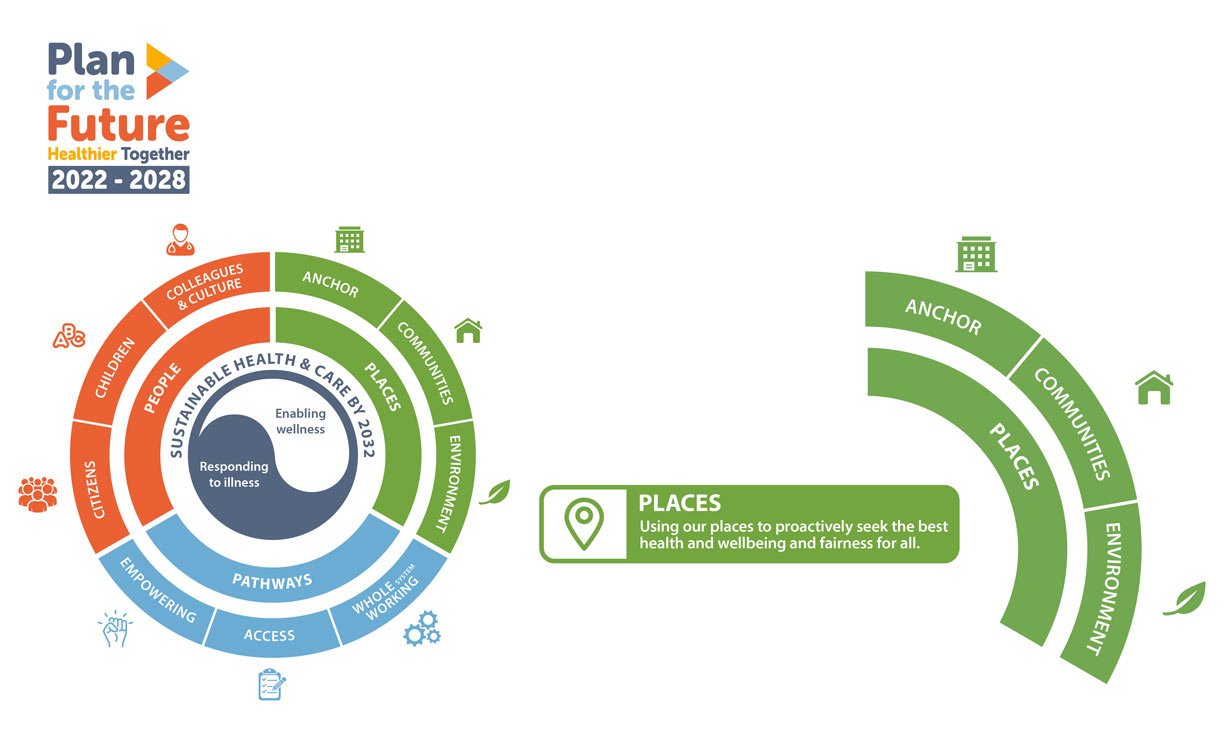To establish and deliver the Grampian response to the Global Climate and Health Emergency with the urgency that is required to protect and sustain environmental and human health.
The vision of the proposed NHS Scotland Climate Emergency and Sustainability Strategy is of a comprehensive set of measures designed to reduce global warming and its impact on the climate and human health and health services whilst maintaining a focus on the provision of equitable health care to the people of Scotland. The underpinning values behind the strategy are those of an enlightened concern for the environment whilst improving the health and wellbeing of communities and reducing health inequalities through the exercise of corporate social responsibility. However, as currently framed the national NHS Scotland strategy remains inwardly focussed. If we are to achieve meaningful change in the way we live a strategy for Grampian and for the Country must begin with the people of Grampian and Scotland in a comprehensive alliance with everybody playing their parts. Mobilising the extensive human, environmental and social assets of Grampian towards the COP 26 goals should be the primary aim.
The role of the NHS in the creation of such a movement is by founded in its role as an Anchor organisation in concert with other public, private and third sector organisations to support the measures needed which individuals and families alone are unable to take. Whilst this work is still in its developmental stages, working within NHS Grampian to deliver DL (2021) 38 is already advanced. Further work is needed to take the next steps for Grampian embracing the urgency with which actions to tackle the co-occurring Climate and Health Emergency through the necessary whole system partnerships that can deliver meaningful co-benefits.
Additional Information
Climate Change poses a catastrophic threat to humanity and natural systems that underpin our lives. Therefore, highlighting the need to tackle climate change and reduce its already present impact will have a positive impact on human health for the future. “Climate change is the biggest global health threat of the 21st century” (The Lancet, Vol 373; p1659, May 16, 2009)
The Climate emergency requires urgent action to reduce our impact, whether that is through delivering a net zero carbon climate resilient built infrastructure and through or adapting the way our services are delivered to be more sustainable, across their whole lifecycle.
NHS Grampian recognises its duty to act in order to address climate change the opportunity exists within the organisation to support innovation, to support community healthcare, building a more resilient health service, working towards tackling climate change.
The organisation must work towards aligning itself to the national Sustainability Strategy and achieving the targets set within this and the own sustainability strategy. In order to achieve this sustainability must be embedded throughout the organisation and recognised both on a corporate level with respect to the legislative requirements, in addition to nurturing and a culture of stewardship and self-governance with respect to sustainability which will in turn have significant impacts on society and he environment at large through the role which NHSG plays as an anchor organisation within the NE and Scotland.
As both an anchor and public sector organisation we must look towards the tools which are out are disposal such as National Sustainability Assessment Tool (NSAT) as a starting point for assessing and improving through actionable outputs with respect to sustainability and all the distinct elements which make up this discipline.
Additionally we cannot ignore the clear planning and investment required to ensure that we achieve the legislative targets that we must achieve as a health board, including but not limited to, 100% renewable heating by 2038 and absolute Net Zero by 2045. With such targets as these to be achieved there is the need for a system change across all our current ways of working and the buildings we work within, further highlighting the need for a cultural change within the staff population and one of infrastructure investment.
Further Reading
- NHSG sustainability strategy link - nhsg-ce-sustainability-strategy.pdf (nhsgrampian.org)


